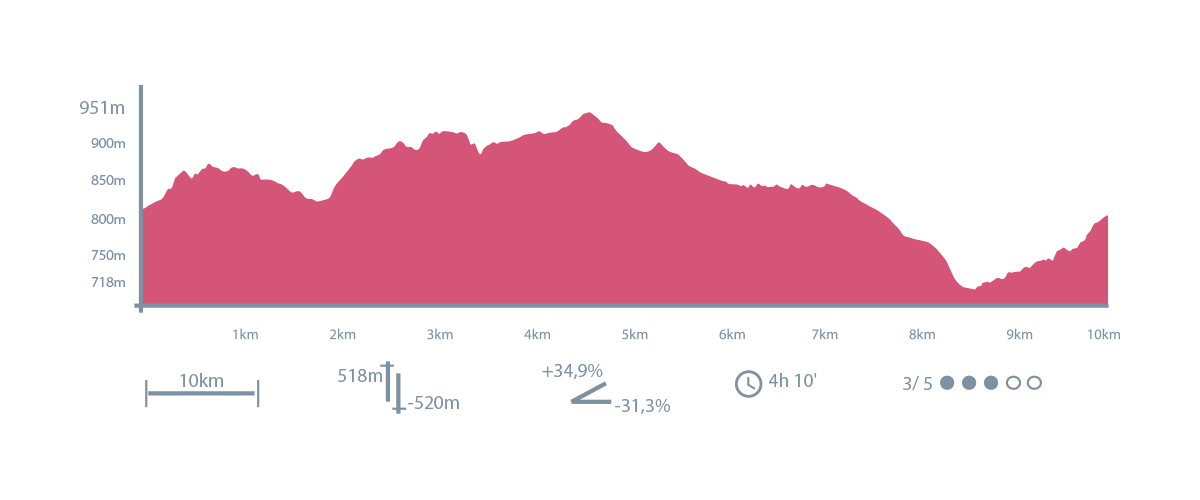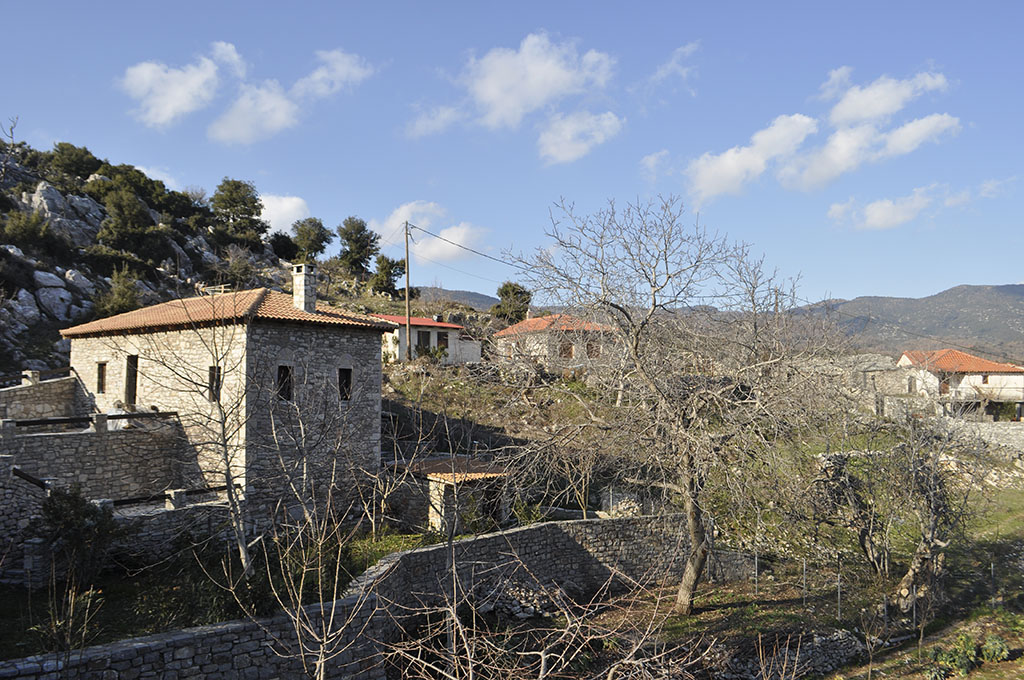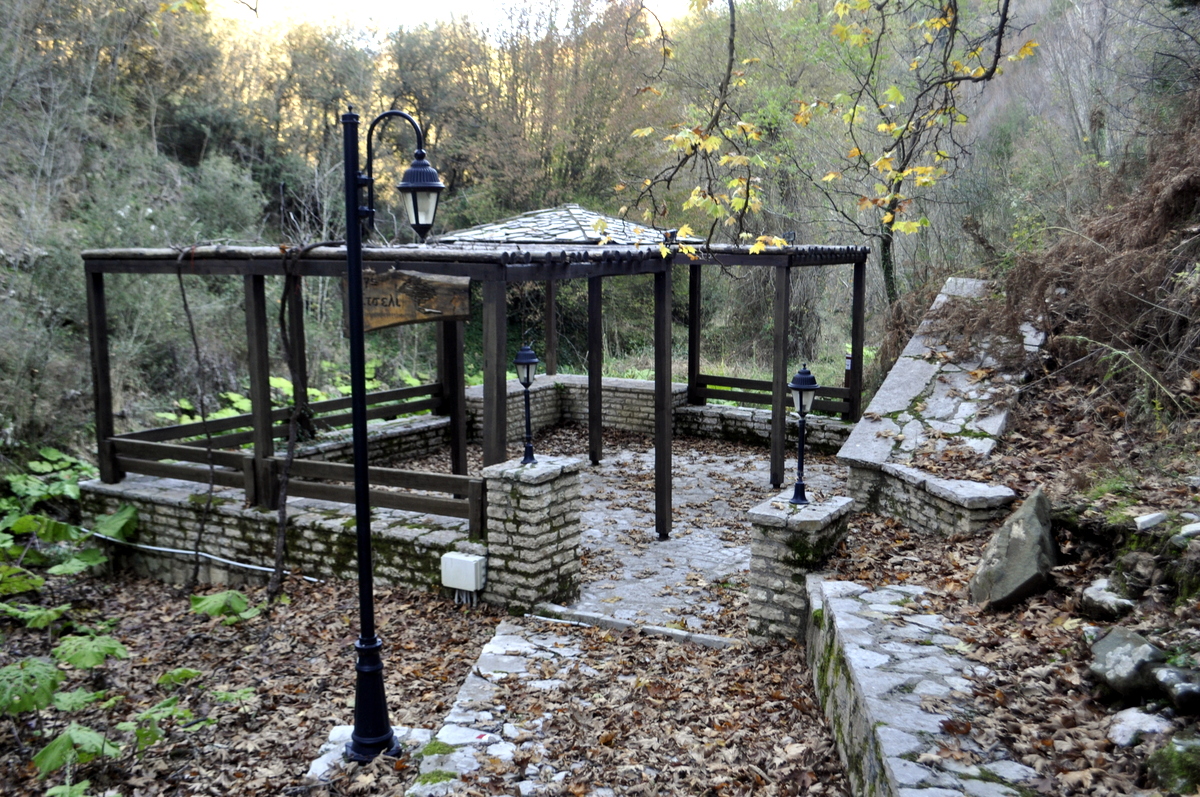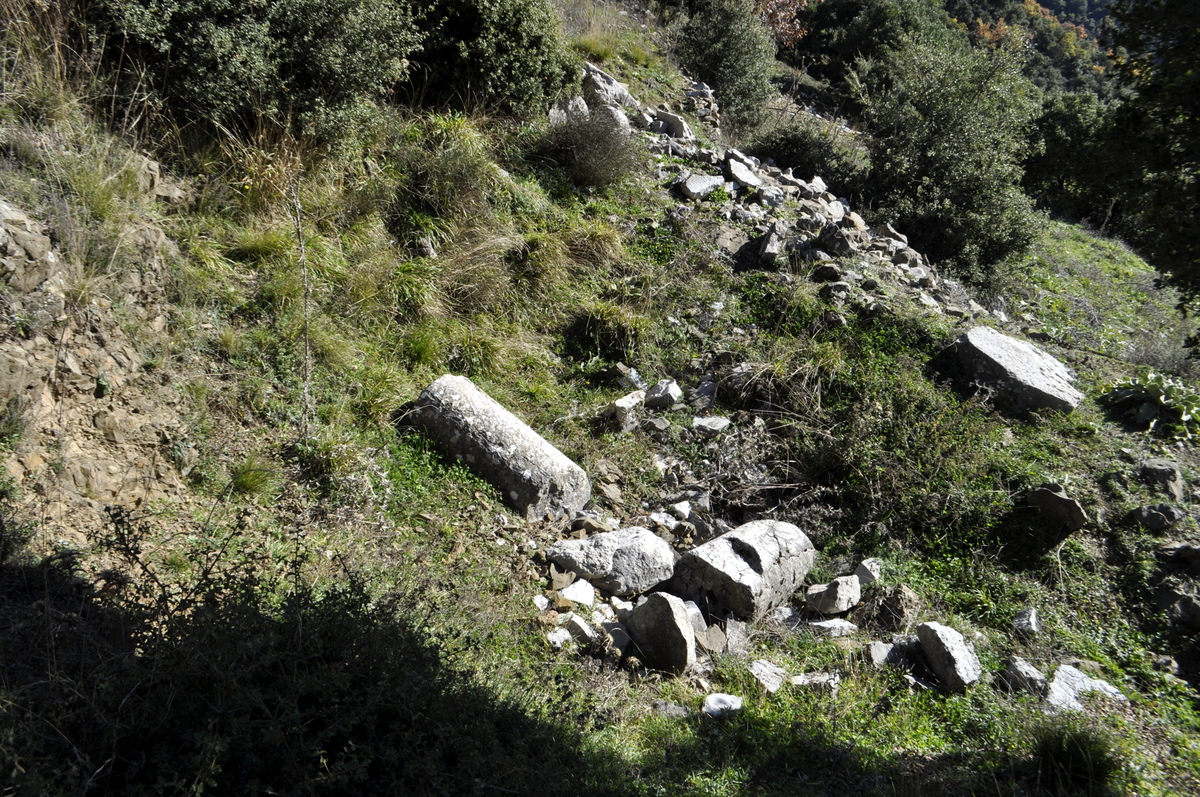Project Description
5. Trail of Bliss
Abeliona - Agios Sostis - Sanctuary of Pan - Neda- Abeliona
The trail follows a circular route, starting from Abeliona and crossing the villages of Agios Sostis and Neda, as well as the sanctuary of Pan.
According to mythology, the God Pan was born in Mount Lycaeus and is considered a patron of breeders with permanent residence in nature. He loved the natural outdoors and spent hours endlessly playing with his pastoral lumber. Pan was the companion of the Nymphs and lover of every young woman or young man approaching his place, that is, Nature. There is no greater bliss than the deeper connection it is to you with nature. Let Pan and your ride on this beautiful inspiration path find the bliss within you.

Details
| 9.9 km | 4h 10‘ | 3/5 |
Starting point: Abeliona
Ending poind: Abeliona
Main sights: Abeliona, Agios Sostis, Ruins of Pan Temple, Neda village, Tritseli Spring
Connected to: Trail of Pan | Sanctuary of Pan – Neda – Ano Karyes, 4. The Sacred Trail, 6. Trail of Freedom
Trail description
The route starts from Abeliona, from the “Spyros’ Traditional Tavern”, and proceeds to the entrance of the village, where the Trani Fountain with its four valves is located (“Kubles”). From there, the steps lead to the Abeliona Retreat. Leaving behind the hostel, the trail climbs gently, in an area of dense mixed vegetation and rich shade, until it reaches the asphalt road leading to the village of Agios Sostis.
At Agios Sostis, following the characteristic bridge of the village, the route proceeds to the western foothills of the Lycaeus Mountains through an old path. This section offers panoramic views of the Neda Valley. The trail, after crossing an area with terraces, threshing floors and ruined huts, ends on a rural dirt road, which crosses an oak forest and running water.
Halfway to the village of Neda, the chapel of St. Athanasios (May-Thanasis in the language of the locals), with its adjacent fountain, offers a rest stop. Just below, a small detour leads to the sanctuary of Panos and to the ruined chapel of Saint-Stratigos, whose walls have been incorporated with architectural members of the ancient temple. Continuing on the dirt road, the hiker arrives at the village of Neda (old name Berekla), with typical stone-built houses and churches. Here one can drink or eat at one of the two taverns of the village.
After Neda, the route goes down the ravine, through a path overshadowed by large holly trees. The stream is bridged by a monotonous, stone bridge, the so-called Berekleiko bridge. It follows a passage under the modern concrete bridge, leading to a completely different environment. Here are the centuries-old plane trees. The trail runs along another ravine, next to running water and under lush shade.
After a short hike, the route reaches the Tritseli fountain, where it meets trail 6 (Abeliona-Petra-Neda-Kakaltryri-Ira Springs). From this source, by the river, an ideal place for a short rest, the route follows a slightly uphill, cobbled path to Abelionas Square. The village owes its name to the vineyards cultivated here in the old years. Today the cultivation of vineyards is very limited.
Sightseeing spots
Abeliona
Built on the notorious crossroads of three counties, Arcadia, Ilias and Messinia, Abeliona is a traditional mountain village surrounded by chestnut forests and innumerable natural springs. Cobblestone streets and old stone houses, hiding images, sounds and scents from another era, reveal themselves for a moment, before the fresh, mountainous air drifts away. A place that turns simple daily delights, into unique experiences that you want to experience again.
Tritseli Spring
The route from Berekleiko Bridge to Abeliona is of particular interest. The trail runs along the river with its gargling water, beneath spectacular plane trees. About halfway you will reach Tritseli and stop by the fountain for some rest and cool water. Around the fountain there is a beautiful seating area, by the river and beneath a centuries -old plane tree. You will sit in the coolness of the plane tree, enjoy the music of the running water and admire, among other things, the spectacular “floating wreaths”. It is an aquatic plant endemic to this area. It is herbaceous, but its leaves are tall and huge like umbrellas.
Ruins of Pan Temple
The ruins of the Sanctuary of Panas, to which Pausanias refers, are scattered on a plateau next to the footpath (which at that point resembles the modern rural dirt road). On the ground you will see stone blocks from the base of the sanctuary and some marble particles. But on the walls of the adjacent ruined church of Saint-Stratigos you will find many architectural particles of the ancient sanctuary built in.
Elementary excavations were carried out here in the early 20th century by a mission of the Archaeological Society led by K. Kourouniotis. The findings were transferred to the Archaeological Museum, the site was abandoned by archaeologists and is unfortunately unprotected today. If you remain silent for a while and allow yourself to be seduced by the beauty and power of the landscape, you may feel the strange energy that some feel today in the sanctuary of Pan.




